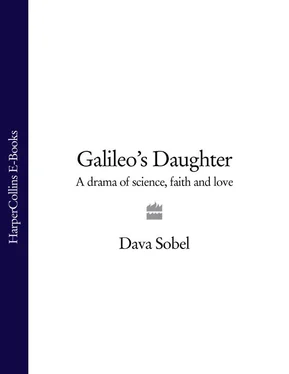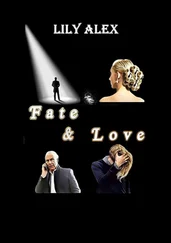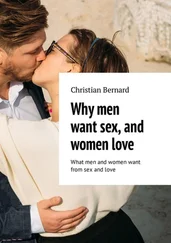Galileo, who typically returned to Florence when the University of Padua closed between terms, procured recommendations as a mathematical mentor to the royal household. As young Prince Cosimo’s tutor, Galileo gained status with the boy’s powerful parents: the much beloved Grand Duke Ferdinando I (who had started his career as a cardinal in Rome before being called home to the throne at the sudden death of his lecherous, murderous older brother, Francesco) and his devoutly religious French wife, Grand Duchess Cristina of Lorraine. By dedicating the tract on the geometrical compass to Cosimo, Galileo hoped to pave his way to an appointment as court mathematician – a prestigious position that would not only lighten his financial burden but also bring him home to his beloved Tuscany.
‘I have waited until now to write,’ Galileo said with all requisite deference in his first letter to Cosimo in 1605, ‘being held back by a respectful concern of not wanting to present myself as presumptuous or arrogant. In fact, I made sure to send you the necessary signs of reverence through my closest friends and patrons, because I did not think it appropriate – leaving the darkness of the night – to appear in front of you at once and stare in the eyes of the most serene light of the rising sun without having reassured and fortified myself with their secondary and reflected rays.’
No formal contract bound the prince and the scientist at that point. If and when Galileo’s tutorial services were required, he was summoned, as in the following invitation written by the chief steward of the grand duke and duchess, dated 15 August 1605, and sent from Pratolino, one of the seventeen Medici palaces, a few miles north of Florence: ‘Her Most Serene Highness wishes that you should come here not only that the Prince may receive competent instruction but that your health may be restored. She hopes that the excellent air on the mountain of Pratolino will do you good. A pleasant room, good food, a comfortable bed, and a hearty welcome await you. Messer Leonido will see that you are provided with a good litter whether you wish to arrive this evening or tomorrow.’
The grand duchess again sent her horse-drawn conveyance to fetch Galileo for the wedding of Prince Cosimo, in 1608, to Maria Maddalena, the archduchess of Austria and sister of Emperor Ferdinand II. The nuptials spread along both banks of the Arno, where spectators on grandstands watched a re-enactment of Jason’s capture of the Golden Fleece, sumptuously staged on a specially constructed island in mid-river, with special effects including giant sea monsters that spat real fire.
In January 1609, when Grand Duke Ferdinando lay ill, Madama Cristina implored Galileo to review her husband’s horoscope. Galileo’s early career experience teaching astronomy to medical students had familiarised him with astrology, since doctors needed to cast horoscopes, to see what the stars foretold of patients’ lives, as an aid to diagnosis and treatment, as well as to ascertain reasons for particular illnesses and determine the most propitious times for mixing medications. Galileo had prepared many horoscopes, including one for his daughter Virginia at her birth in 1600, probably for the novelty of playing with astronomical positions, as he never expressed any faith in astrological predictions. In fact he remarked how the prophecies of astrologers could most clearly be seen after their fulfilment. *
Nevertheless, Galileo courteously replied to the grand duchess’s request by return post. Despite his forecast of many more happy years for Ferdinando, the grand duke died of his illness just three weeks later. And so it happened that Galileo’s summertime student, not quite nineteen years old, was suddenly enthroned as His Serene Highness Grand Duke Cosimo II, sovereign of all Tuscany.
Cosimo’s accession gave Galileo the perfect opportunity to petition for the coveted court post, as he had created it in his dreams. ‘Regarding the everyday duties,’ Galileo wrote in his application to Florence, ‘I shun only that type of prostitution consisting of having to expose my labour to the arbitrary prices set by every customer. Instead, I will never look down on serving a prince or a great lord or those who may depend on him, but, to the contrary, I will always desire such a position.’
But he did not obtain the position just then. He continued his teaching at Padua and his research, which focused on establishing the mathematical principles of simple machines such as the lever, and determining how bodies accelerate during free fall – one of the most important unresolved questions of seventeenth-century science. ‘To be ignorant of motion is to be ignorant of Nature,’ Aristotle had said, and Galileo sought to end the general ignorance of Nature’s laws of motion. Later that year, however, in the summer of 1609, Galileo was distracted from his motion experiments by rumours of a new Dutch curiosity called a spyglass, or eyeglass, that could make far-away objects appear closer than they were. Though few Italians had seen one first-hand, spectacle makers in Paris were already selling them in quantity.
Galileo immediately grasped the military advantage of the new spyglass, although the instrument itself, fashioned from stock spectacle lenses, was little more than a toy in its first incarnation. Seeking to improve the spyglass by augmenting its power, Galileo calculated the ideal shape and placement of glass, ground and polished the crucial lenses himself, and travelled to nearby Venice to show the doge, along with the entire Venetian senate, what his contrivance could do. The response, he reported, was ‘the infinite amazement of all’. Even the oldest senators eagerly scaled the highest bell towers of the city, repeatedly, for the unique pleasure of discerning ships on the horizon – through the spyglass – a good two to three hours before they became visible to the keenest-sighted young lookouts.
In exchange for the gift of his telescope (as a colleague in Rome later renamed the instrument), the Venetian senate renewed Galileo’s contract at the University of Padua for life, and raised his salary to one thousand florins per year – more than five times his starting pay.
Still Galileo continued to refine the optical design in subsequent attempts, and when autumn came with its early dark, he chanced to focus one of his telescopes on the face of the Moon. The jagged features that greeted him by surprise there spurred him to improve his skill at lens grinding to build even more powerful models – to revolutionise the study of astronomy by probing the actual structure of the heavens, and to disprove Aristotle’s long unquestioned depiction of all celestial bodies as immutable perfect spheres.
In November 1609 Galileo fabricated lenses with double the power of the glass that had dazzled the doge. Now equipped to magnify objects by a factor of twenty, he spent half of December drafting a series of detailed drawings of the Moon in several phases. ‘And it is like the face of the Earth itself,’ Galileo concluded, ‘which is marked here and there with chains of mountains and depths of valleys.’
From the Moon he journeyed to the stars. Two kinds of stars filled the heavens of antiquity. The ‘fixed’ stars outlined pictures on the night sky and wheeled around the Earth once a day. The ‘wandering’ stars, or planets – Mercury, Venus, Mars, Jupiter and Saturn – moved against the background of the fixed stars in a complex pattern. Galileo became the first to distinguish them further: ‘Planets show their globes perfectly round and definitely bounded, looking like little moons, spherical and flooded with light all over; fixed stars are never to be seen bounded by a circular periphery, but have rather the aspect of blazes whose rays vibrate about them, and they scintillate a very great deal.’ *
Читать дальше












